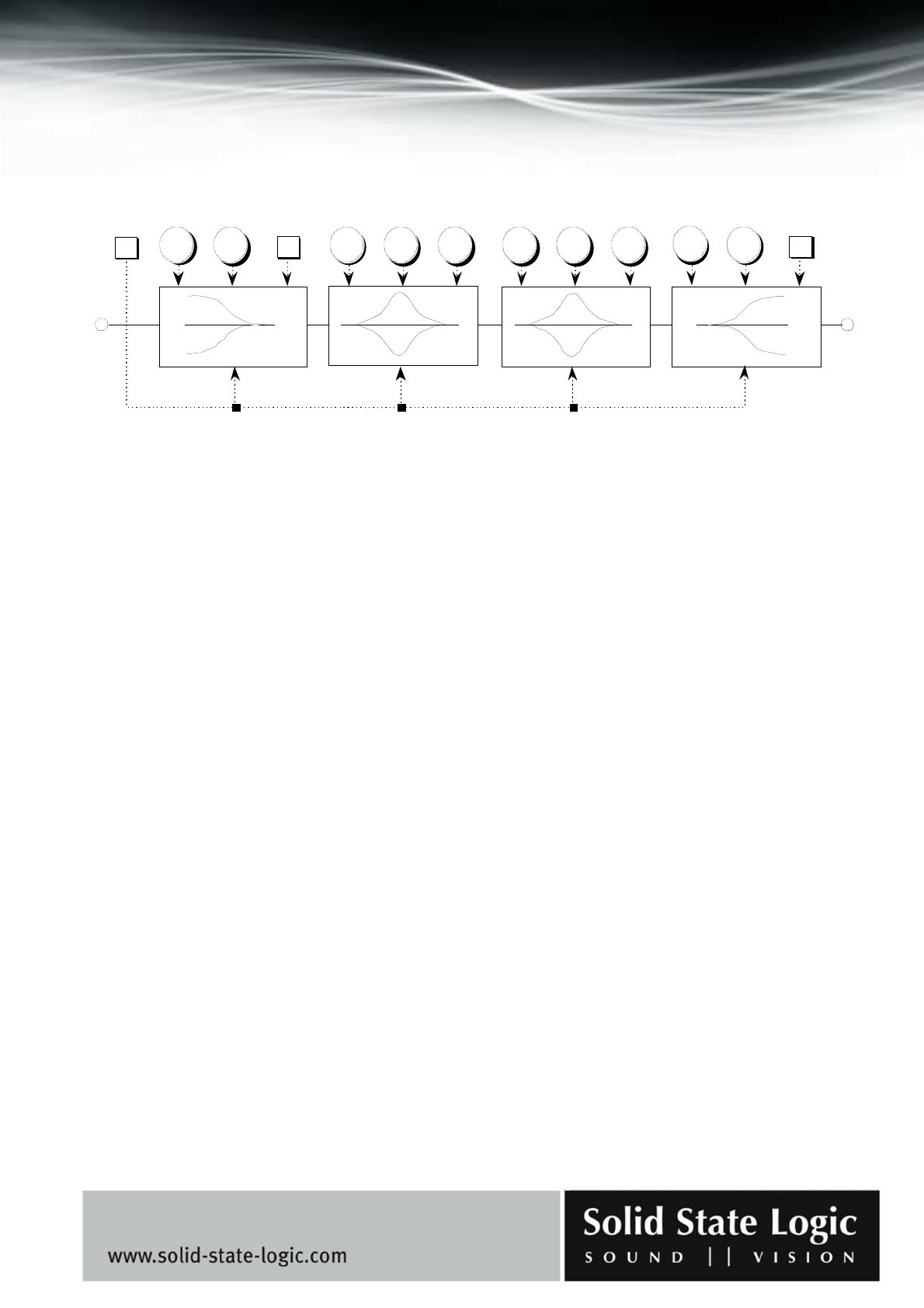
Duende User Guide
Page 20 of 29
6.4 Equaliser Section
±dB
Freq kHz Q
±dB
Freq kHz Q
±dB
Freq kHz
BELL
±dB
Freq kHz
BELL
G
INPUT OUTPUT
LF LMF HMF HF
Operation
The equaliser included with the Duende EQ and Dynamics Channel Strip plug-in is a four band
parametric EQ. Based on the XL 9000 K Series EQ circuit, this plug-in includes two distinct EQ
curves, one based on the SSL G Series EQ and another based on the latest version of SSL’s classic E
Series EQ.
The plug-in includes high and low frequency shelving equalizers (which can be switched to
peaking curves via the BELL button) and two overlapping equalizers with adjustable Q.
The LF section operates over a frequency range of 40Hz - 600Hz and is capable of up to 16.5dB of
cut or boost. The HF section operates over a frequency range of 1.5kHz - 22kHz and is capable of
up to 20dB of cut or boost.
Normally these shelving curves have a degree of overshoot/undershoot (depending on whether
you are boosting or cutting) below the selected HF frequency or above the selected LF frequency.
De-selecting the G button removes the overshoot/undershoot effect and provides a slightly gentler
slope. Selecting BELL in either mode switches the equaliser to a peaking curve.
The LMF section operates over a frequency range of 200Hz - 2 kHz and is capable of ±20dB of gain
with a continuously variable Q from 0.5 to 2.5.
The HMF section operates over a frequency range of 600Hz - 7kHz and is capable of ±20dB of gain
with a continuously variable Q from 0.5 to 2.5.
Normally, at any Q setting, the bandwidth of the HMF and LMF sections varies with gain,
whereby an increase in boost or cut increases the selectivity of the EQ. This type of EQ can sound
effective when used at moderate settings; the gentle Q curve lends itself to the application of
overall EQ on combined sources and subtle corrective adjustments to instruments and vocals.


















